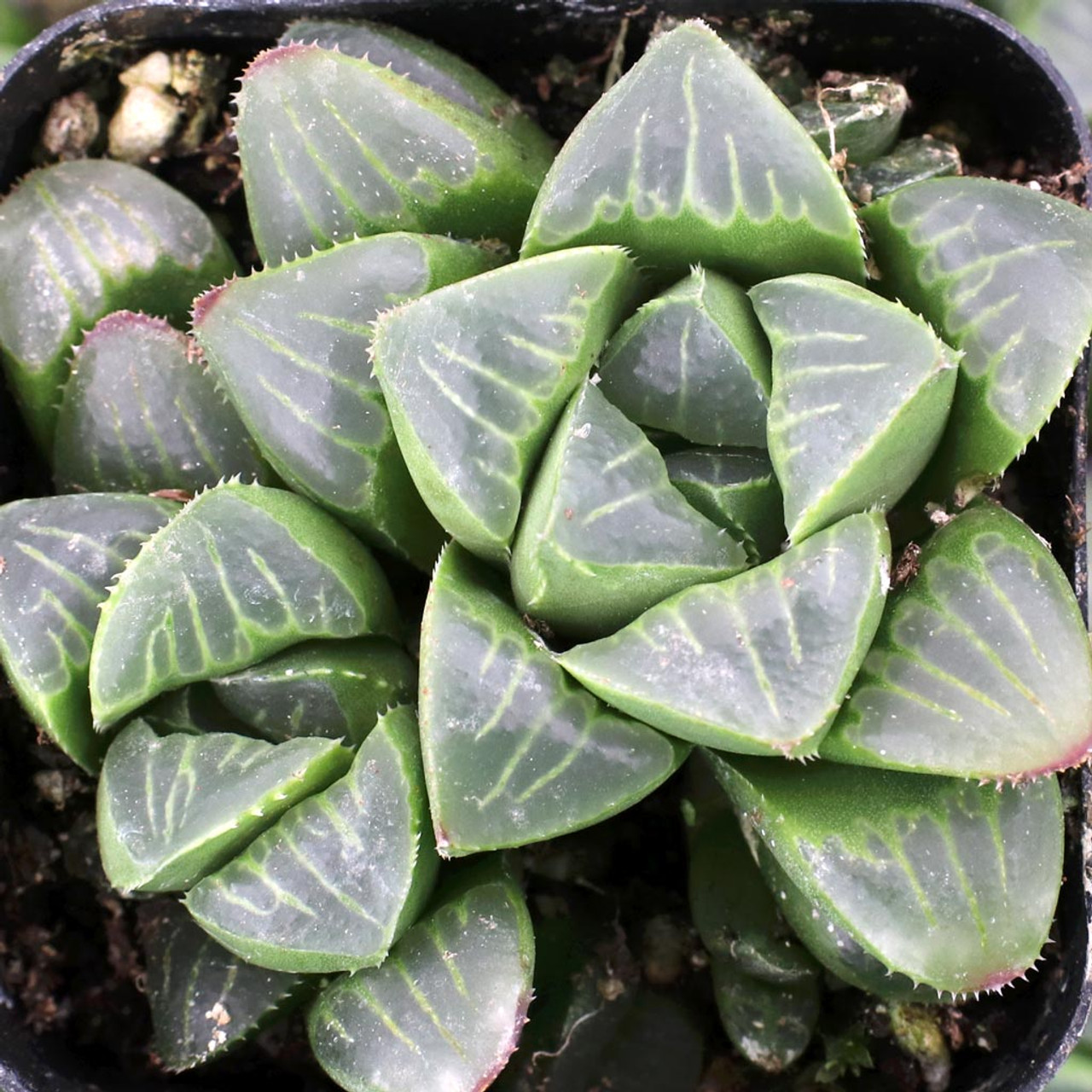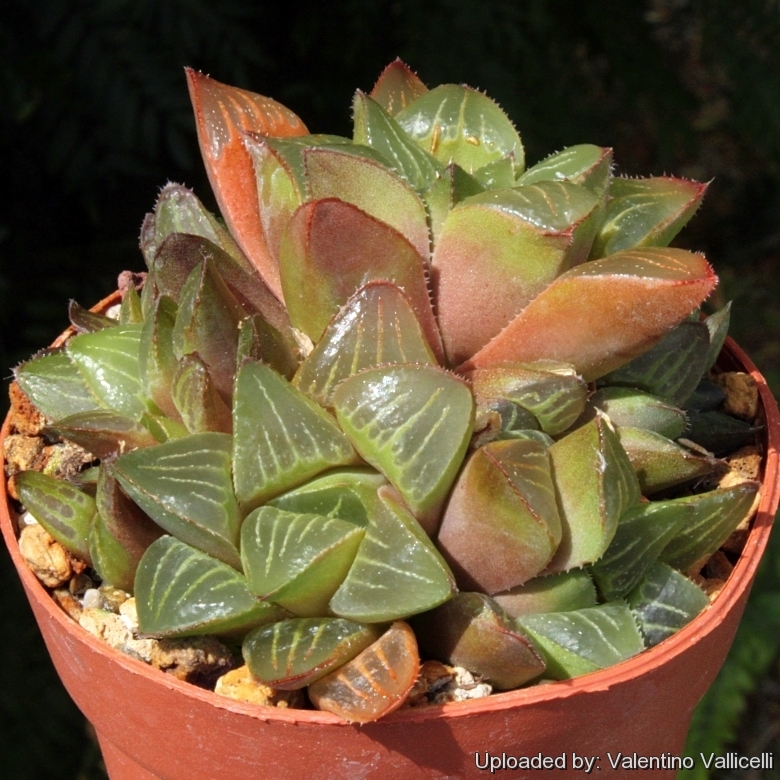This small, slow-growing succulent has distinctive green and white striped leaves with flat tops. The leaves are designed to let in light, with a windowed effect. It’s an ideal choice for new gardeners, and when the plant is stressed in the right way, the leaves may even turn orange.
Table of Contents
Care and Propagation Information
Haworthia mutica is an ideal option for those who are new to growing succulents indoors or with pets, as it is tolerant of low-light conditions and non-toxic.
Watering
Haworthia mutica requires the “soak and dry” method of watering. Allow the soil to dry out completely between watering sessions. Avoid fertilizing and overwatering during the Summer when this succulent is dormant.
Where to Plant
Haworthia mutica can’t survive cold temperatures, so if you’re in an area with temperatures that dip below 30° F (-1.1° C), you should grow it in a pot that can be taken inside during cold weather. This succulent prefers partial sun or low light indoors.
How to Propagate Haworthia mutica
Haworthia mutica can be reproduced by taking cuttings from the offsets.
Offsets
Haworthia mutica will generate tiny rosette offsets that can be removed from the main stem using a clean, sharp knife or scissors. Allow the offsets to air dry for 1-2 days prior to placing them on soil that drains easily.
Care and Propagation Information
General Care for Haworthia mutica
Watering
Haworthia mutica requires the “soak and dry” method of watering. Allow the soil to dry out completely between watering sessions. Avoid fertilizing and overwatering during the Summer when this succulent is dormant.
Where to Plant
Haworthia mutica can’t survive cold temperatures, so if you’re in an area with temperatures that dip below 30° F (-1.1° C), you should grow it in a pot that can be taken inside during cold weather. This succulent prefers partial sun or low light indoors.
How to Propagate Haworthia mutica
Haworthia mutica can be reproduced by taking cuttings from the offsets.
Offsets
Haworthia mutica will generate tiny rosette offsets that can be removed from the main stem using a clean, sharp knife or scissors. Allow the offsets to air dry for 1-2 days prior to placing them on soil that drains easily.



